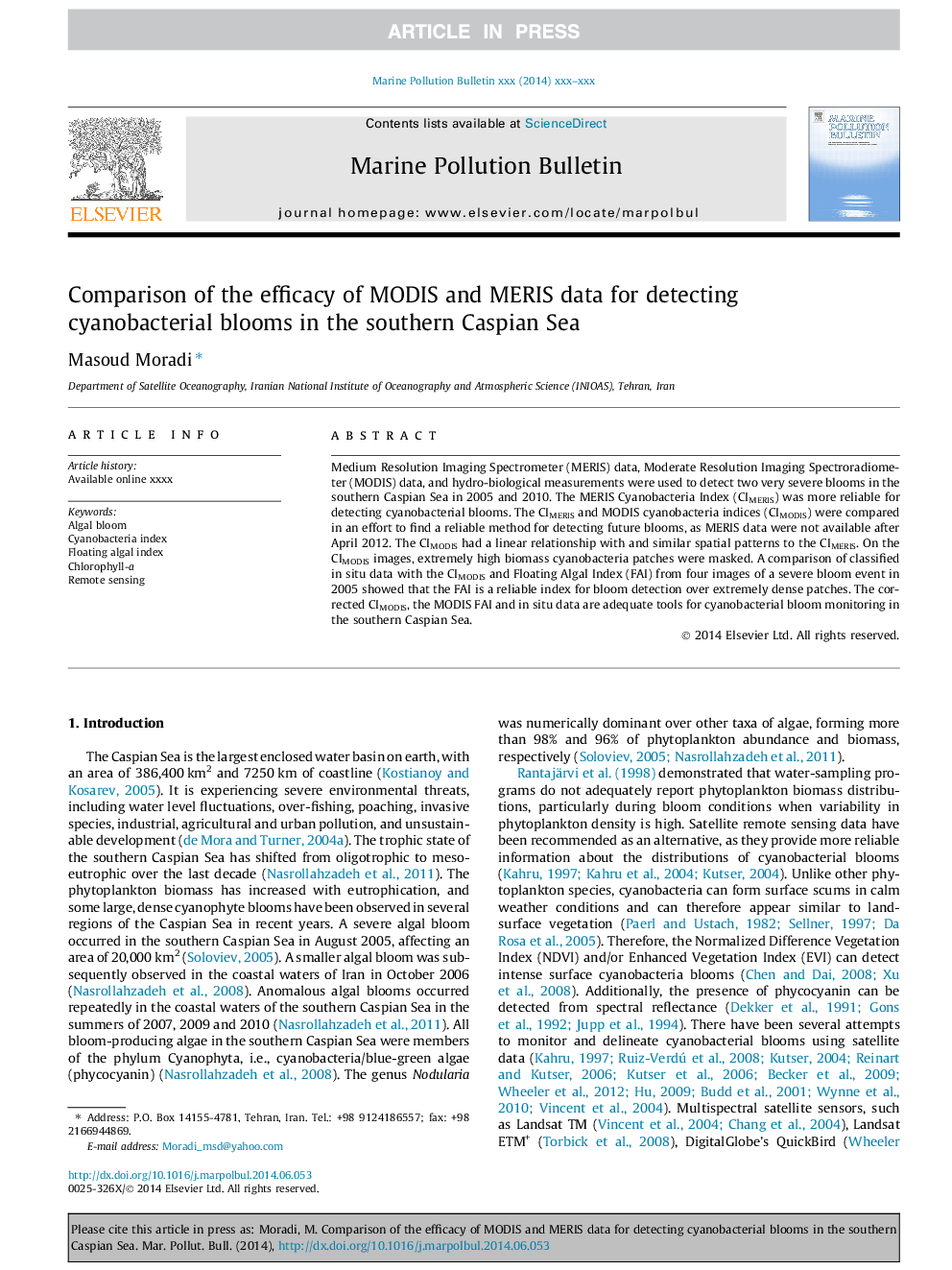| Article ID | Journal | Published Year | Pages | File Type |
|---|---|---|---|---|
| 6357678 | Marine Pollution Bulletin | 2014 | 12 Pages |
Abstract
Medium Resolution Imaging Spectrometer (MERIS) data, Moderate Resolution Imaging Spectroradiometer (MODIS) data, and hydro-biological measurements were used to detect two very severe blooms in the southern Caspian Sea in 2005 and 2010. The MERIS Cyanobacteria Index (CIMERIS) was more reliable for detecting cyanobacterial blooms. The CIMERIS and MODIS cyanobacteria indices (CIMODIS) were compared in an effort to find a reliable method for detecting future blooms, as MERIS data were not available after April 2012. The CIMODIS had a linear relationship with and similar spatial patterns to the CIMERIS. On the CIMODIS images, extremely high biomass cyanobacteria patches were masked. A comparison of classified in situ data with the CIMODIS and Floating Algal Index (FAI) from four images of a severe bloom event in 2005 showed that the FAI is a reliable index for bloom detection over extremely dense patches. The corrected CIMODIS, the MODIS FAI and in situ data are adequate tools for cyanobacterial bloom monitoring in the southern Caspian Sea.
Related Topics
Physical Sciences and Engineering
Earth and Planetary Sciences
Oceanography
Authors
Masoud Moradi,
